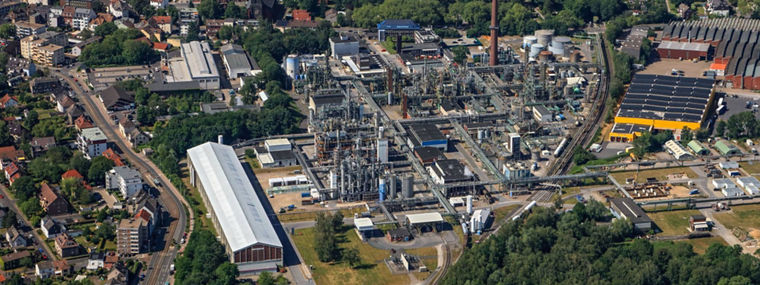Pilot electrolysis plant in Herne: Green hydrogen is the key to wind energy
Making advances with hydrogen technology
Internally known as the H2annibal project, Evonik’s pioneering collaboration with Siemens Energy is a significant advancement in hydrogen technology. Taking inspiration from the abandoned local Hannibal coal mine, this innovative pilot electrolyzer project aims to produce green hydrogen as a critical input for sustainable isophorone diamine (IPDA) production at Herne.
Through rigorous research and testing in an industrial environment, the project is driving progress and innovation in the sector. Initiated in late 2022 and funded by German Federal Ministry of Education and Research, it focuses on producing green hydrogen as a renewable feedstock for our VESTAMIN® IPDA products, essential for manufacturing rotor blades for wind turbines. The project is scheduled to conclude in mid-2025, representing a notable advancement in sustainable energy solutions for isophorone production and highlighting our commitment to sustainability and innovation in the energy sector.

The significance of green hydrogen
Green hydrogen is pivotal to energy transition, providing a clean alternative to fossil fuels. By utilizing renewable energy sources, our PEM (proton exchange membrane) electrolyzer, with a power rating of 8 MW, has the capacity to meet up to 45% of the hydrogen demand at the Herne site while supplying 100% of the oxygen required for production processes. This dual functionality enhances both sustainability and operational efficiency at the site.
Environmental impact
The project is estimated to prevent around 12,000 metric tons of CO2 emissions per year. This reduction supports sustainability goals and contributes to the broader hydrogen economy in Germany, emphasizing the importance of innovative technologies in combating climate change.
Our vision for sustainable growth
The H2annibal project is a vital component of Evonik's broader strategy, which includes a commitment to invest €700 million in sustainable production processes by 2030. By transforming the Herne site into a model for sustainable chemical production, this project contributes to a greener future.
We are proud to be at the forefront of innovation in the chemical industry, and this initiative highlights our commitment to sustainability and our role in energy transition. Together with our partners, we are excited to lead the way towards a cleaner, more sustainable future.
